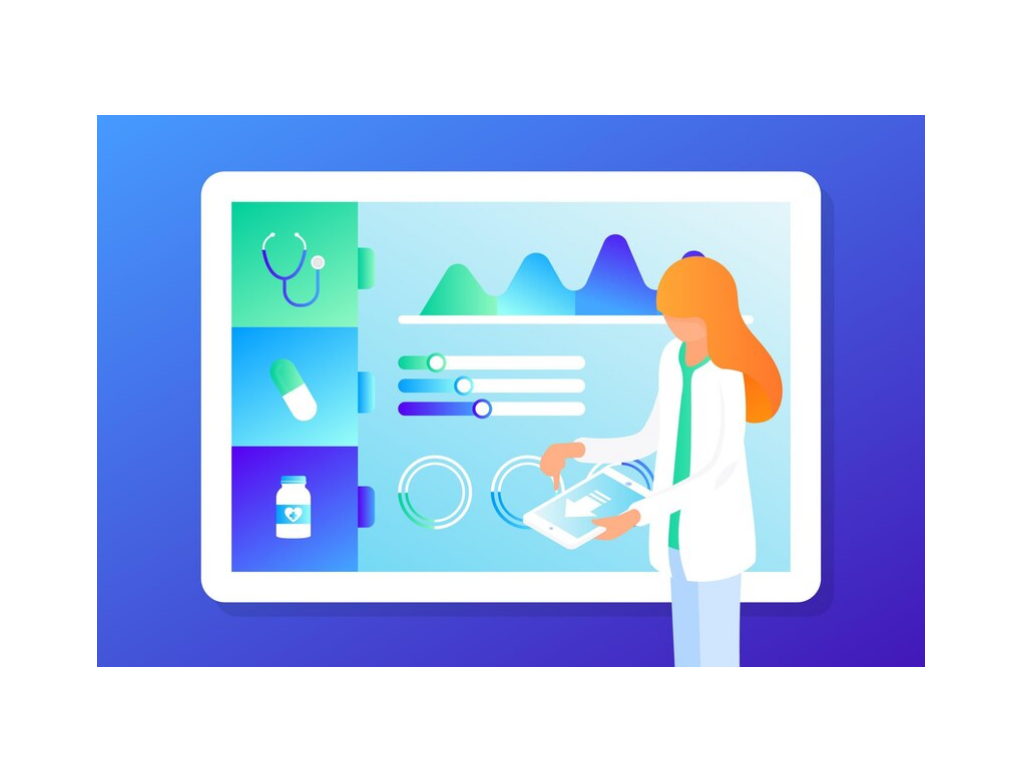In the rapidly evolving field of healthcare, predictive analysis has become a transformative tool. By leveraging vast amounts of data, predictive analysis enables healthcare professionals to anticipate health outcomes, optimize resource allocation, and personalize treatments. As healthcare data continues to grow, predictive analysis in healthcare use cases is playing an increasingly critical role in improving patient outcomes, reducing costs, and enhancing operational efficiency. This article explores several real-world use cases of predictive analysis in healthcare and how they are shaping the future of medicine.
What is Predictive Analysis in Healthcare?
Predictive analysis in healthcare refers to the use of data mining, machine learning, and statistical algorithms to predict future health outcomes based on historical and real-time patient data. These predictions can inform decisions regarding treatment plans, hospital operations, and disease prevention strategies. Predictive models in healthcare can analyze various data sources, including electronic health records (EHR), medical imaging, patient behavior, genomic data, and wearable health technology, to generate insights that assist healthcare providers in delivering personalized care.
Use Cases of Predictive Analysis in Healthcare
1. Predicting Hospital Readmissions
One of the most common applications of predictive analysis in healthcare is predicting hospital readmissions. Hospital readmissions are not only costly but also increase patient morbidity and strain healthcare systems. With predictive analytics, healthcare providers can forecast which patients are most likely to be readmitted within a certain period (typically 30 days post-discharge) based on factors such as demographics, medical history, previous hospitalizations, and social determinants of health.
How It Works:
Using patient data, machine learning models can identify patterns that suggest a higher risk of readmission. For example, patients with chronic conditions like heart disease, diabetes, or respiratory illnesses are at a greater risk. Predictive analysis allows healthcare providers to intervene early, offering targeted follow-up care such as at-home services, medication adjustments, or personalized care plans to prevent avoidable readmissions.
Benefits:
- Reduces healthcare costs by avoiding unnecessary readmissions
- Improves patient satisfaction by ensuring timely care and reducing hospital stays
- Helps healthcare systems optimize resource allocation and reduce overcrowding in hospitals
2. Personalized Treatment Plans
Predictive analysis is transforming personalized medicine by providing data-driven insights that help create individualized treatment plans. In fields like oncology, cardiology, and diabetes management, predictive models can analyze a patient’s genetic data, treatment history, and lifestyle to predict how they will respond to specific therapies.
How It Works:
For example, in cancer care, predictive models can analyze genetic information to forecast how a patient will respond to chemotherapy, immunotherapy, or targeted treatments. By identifying which treatments are most likely to succeed, healthcare providers can avoid unnecessary trial-and-error, reducing side effects and improving overall treatment efficacy.
Benefits:
- Enhances treatment outcomes by matching patients with the most effective therapies
- Reduces healthcare costs by minimizing ineffective treatments
- Improves patient experience by avoiding unnecessary side effects and hospital visits
3. Early Detection of Chronic Diseases
Chronic diseases such as diabetes, hypertension, and cardiovascular diseases can often be prevented or better managed with early detection. Predictive analysis enables healthcare providers to identify individuals at risk of developing these conditions even before symptoms appear, based on various risk factors like family history, lifestyle choices, and medical history.
How It Works:
By analyzing vast amounts of patient data, predictive analytics can identify patterns that suggest an individual is at risk of developing a chronic disease. For example, a predictive model might flag a patient with elevated blood pressure, obesity, and a family history of hypertension as being at high risk for developing cardiovascular disease. Early intervention through lifestyle modifications, medication, and regular monitoring can help prevent or delay the onset of these conditions.
Benefits:
- Prevents the onset of chronic diseases by identifying high-risk individuals early
- Reduces the long-term burden on healthcare systems
- Improves quality of life for patients by enabling proactive care
4. Predicting Disease Outbreaks
Predictive analysis in healthcare is also being used to predict and manage disease outbreaks. By analyzing data from various sources, including historical health records, social media, and news reports, predictive models can anticipate when and where an outbreak is likely to occur. This has been particularly beneficial in managing infectious diseases like influenza, Ebola, and COVID-19.
How It Works:
Using machine learning algorithms, healthcare providers and public health officials can analyze patterns in historical data and detect anomalies that signal the potential for a disease outbreak. For instance, by tracking flu activity in specific regions and monitoring trends in social media and healthcare data, predictive models can forecast a potential increase in flu cases, allowing public health officials to take preventive measures like issuing warnings, preparing vaccines, and allocating medical resources.
Benefits:
- Enables timely interventions to prevent or mitigate disease spread
- Helps healthcare systems prepare and allocate resources efficiently
- Reduces the societal impact of infectious diseases by limiting their spread
5. Predicting Mental Health Crises
Mental health conditions, such as depression, anxiety, and PTSD, often go undiagnosed and untreated due to their complex nature. Predictive analysis in healthcare is helping identify individuals who are at risk of developing mental health issues or experiencing a mental health crisis.
How It Works:
Predictive models can analyze various data sources, including electronic health records, behavioral data, and even social media activity, to predict when a person may be at risk for a mental health crisis. For instance, patients with a history of depression who are showing signs of social withdrawal or declining activity levels can be flagged by predictive models. These patients can then be provided with timely interventions, such as counseling or medication, to prevent more severe mental health issues.
Benefits:
- Improves mental health outcomes by identifying at-risk individuals before issues escalate
- Reduces the stigma surrounding mental health by promoting proactive care
- Increases patient engagement by providing timely and personalized interventions
6. Optimizing Staffing and Resource Allocation
Healthcare providers can use predictive analytics to optimize staffing levels and resource allocation. By analyzing patient volume trends, seasonal variations, and emergency department (ED) visits, predictive models can forecast the demand for healthcare services and allocate staff accordingly.
How It Works:
Hospitals and clinics can use historical data to predict patient flow, such as the number of patients expected to visit the emergency room on a given day. Predictive models can analyze factors like weather conditions, local events, and seasonal trends to help healthcare providers adjust staffing levels, ensuring that there are enough healthcare professionals to handle the demand. Additionally, resource allocation can be optimized to ensure that medical equipment, hospital beds, and other critical resources are available when needed most.
Benefits:
- Reduces wait times and improves patient satisfaction
- Enhances operational efficiency by preventing overstaffing or understaffing
- Helps healthcare systems manage costs by optimizing resource utilization
Benefits of Predictive Analysis in Healthcare
The application of predictive analysis in healthcare brings several key benefits, including:
- Improved Patient Outcomes: By anticipating health issues and intervening early, predictive analytics helps improve overall patient outcomes.
- Cost Efficiency: Predicting potential problems and preventing complications reduces healthcare costs, particularly in areas such as hospital readmissions and chronic disease management.
- Personalized Care: Predictive models enable personalized treatment plans based on individual patient data, improving the accuracy and effectiveness of treatments.
- Resource Optimization: Healthcare providers can better allocate resources based on predictive data, ensuring that hospitals and clinics operate efficiently.
Challenges and Considerations
While predictive analysis has tremendous potential, there are challenges to its widespread adoption in healthcare:
- Data Privacy and Security: Protecting patient data and ensuring compliance with regulations such as HIPAA is essential when using predictive analytics.
- Data Quality: The accuracy of predictive models relies on the quality of the data used. Incomplete or inaccurate data can lead to flawed predictions.
- Integration with Existing Systems: Integrating predictive analytics into existing healthcare infrastructure, such as EHR systems, can be complex and costly.
- Healthcare Professional Buy-In: Some healthcare providers may resist adopting new technologies, especially if the predictive models are perceived as unreliable or complex.
Conclusion
Predictive analysis in healthcare is revolutionizing the way medical professionals approach patient care, disease prevention, and resource management. From reducing hospital readmissions to optimizing staffing levels and detecting chronic diseases early, predictive models are transforming healthcare systems worldwide. Despite challenges such as data privacy and integration complexities, the future of predictive analytics in healthcare holds immense potential for improving patient outcomes, reducing costs, and creating more efficient healthcare environments.
FAQs
1. What are some examples of predictive analysis in healthcare?
Predictive analysis in healthcare is used for predicting hospital readmissions, personalizing treatment plans, early detection of chronic diseases, forecasting disease outbreaks, and predicting mental health crises.
2. How does predictive analysis improve patient outcomes?
Predictive analysis improves patient outcomes by identifying at-risk individuals and enabling early interventions, leading to more effective treatment plans and better overall health management.
3. What challenges does predictive analysis face in healthcare?
Challenges include ensuring data privacy and security, maintaining data quality, integrating with existing healthcare systems, and gaining healthcare professionals’ buy-in to adopt predictive models.


